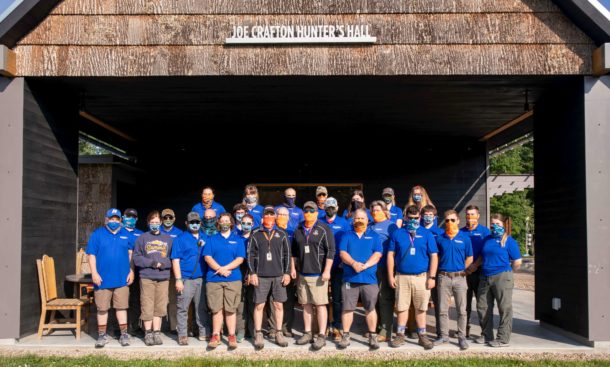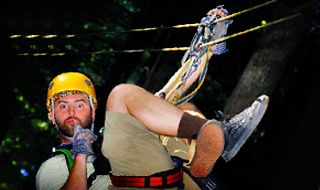Add speed, height, adrenaline, and the wind in your face all together. What do you get? A zip line canopy tour, of course. (And if you share this post, you’ll also get some bonus video of a half-mile-plus zipline in Costa Rica.)
For some, the thrill of flying through the trees in the New River Gorge is the experience of a lifetime. But what about the people who get to experience it every day? You may call them lucky, but at the Summit they’ll be known simply as zip line guides.
So what is it like to be one of the few, elite guides? Let’s find out.
A Day In The Life Of A Zip Line Guide
Every day starts with a full course inspection before zip line guests even arrive. According to Andrew Sullivan, an Adventures on the Gorge TreeTops and Gravity Zip Lines guide, checking for dangers on the course like fallen trees, insecure cables or damaged equipment is a must.
“We can do up to three tours a day, but it’s usually just two,” said Sullivan who is in his second year of guiding on the canopy tour just minutes away from the Summit site.
With each trip lasting around 3 hours and plenty of time spent preparing guests and gear, that can make for a long, taxing day. In addition to actually running the course, guides are also responsible for making sure guests are properly outfitted and educated for each tour. After a training session at the Ground School, a controlled 40-foot zip line at the beginning of the course, Sullivan has to assess his new crew and decide whether or not they have the skills to make it through the entire course safely.


“We have to handle scared, hesitant and afraid people,” said Sullivan. “We also have to watch for medical conditions that might be a problem.”
So what if there is a problem even after all of the safety precautions taken by the guides? That’s where their extensive training really kicks in.
Each zip line guide has to be approved by the Association for Challenge Course Technology, or ACCT for short. The ACCT sets strict safety standards that make sure the guide’s skills are up to par for any worst-case scenario.
After an initial 60 hours of training on the zip line course, guides are then subjected to a series of safety challenges to test their knowledge and earn their highline rescue certification. The tests, which are time sensitive, simulate the experience a guide would have when lowering an injured person from one of the 40- to 85-foot towers on the course.
[pullquote]“We have to be able to lower someone safely at any point on the course.” — Andrew Sullivan, TreeTops Canopy Tour Guide[/pullquote]
Think you can still handle it? We’re just getting to the most important skill of all.
In addition to all of the intense safety measures that are taken, guides are expected to give their guests a great experience, too. That means learning about the history, environment and culture that make the New River Gorge region special.
Oh, and telling the occasional joke never hurts, either.
Do you think you could handle all of the physical expectations of being a zip line guide? Give us your $0.02 in the comments.




